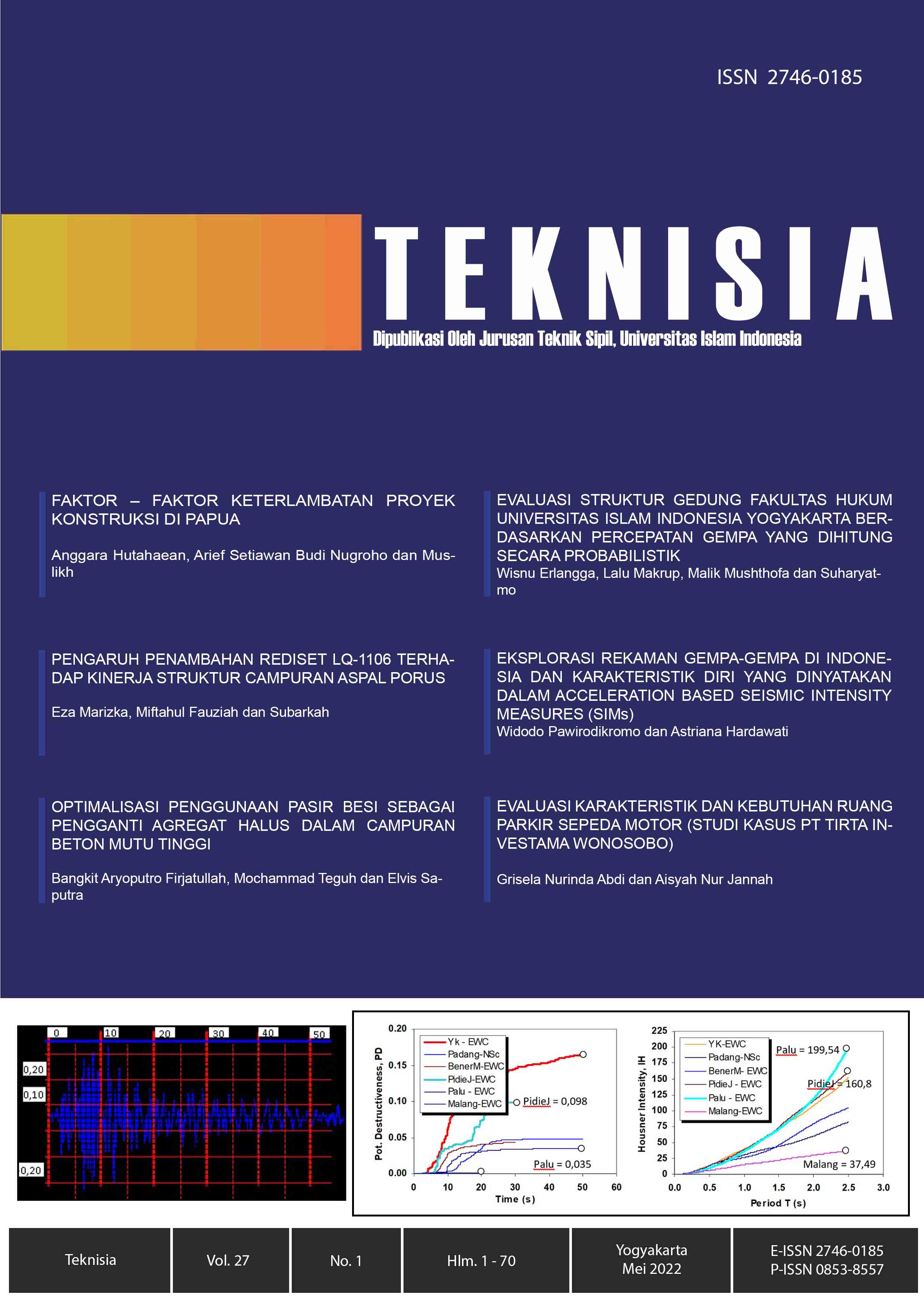Main Article Content
Abstract
Indonesia is a prone country to earthquake hazards. This situation is indicated by the number of earthquakes ranging from small to significant events. However, digital earthquake ground motion data are not available, making it difficult for further research. This paper aims to explore recordings of earthquakes that occurred in Indonesia, which are then presented in digital data and used to identify their damage potential in the form of Seismic Intensity Measures (SIMs). After being traced, it turned out that there were only six earthquakes whose ground acceleration time history was found through the paPers published by researchers. The earthquakes were the Mw 6.2 Yogyakarta (2006), the Mw7.6 Padang (2009), the Mw6.1 Bener Meriah Central Aceh (2013), and the Mw6.5 Pidie Jaya Aceh (2016), the Mw7.5 Palu (2018) and the Mw6.1 Malang (2021) earthquakes. The manual digitization and processing to obtain ground acceleration data every 0.01s time step are required. Eight aspects based on acceleration and two aspects based on response spectrum have been used as parameters for Seismic Intensity Measures SIMs. The exploration results show that the source of the earthquake in Sumatra is still relatively shallow, getting more profound in the Java and Nusa Tenggara subduction. The P.G.A. of the Yogyakarta earthquake is 0.272g with a total duration of more than 50 seconds. In general, according to SNI 1726, 2019, the spectrum has been able to cover all ground acceleration time histories. The Yogyakarta earthquake has the highest Earthquake Power, Arias Intensity, and Potential Destructiveness values, namely PE = 0.255 and IA = 2.201, and P.D. = 0.166.
Article Details
Under the following term:
-
Attribution — You must give appropriate credit, provide a link to the license, and indicate if changes were made. You may do so in any reasonable manner, but not in any way that suggests the licensor endorses you or your use.
-
ShareAlike — If you remix, transform, or build upon the material, you must distribute your contributions under the same license as the original.
- No additional restrictions — You may not apply legal terms or technological measures that legally restrict others from doing anything the license permits.
